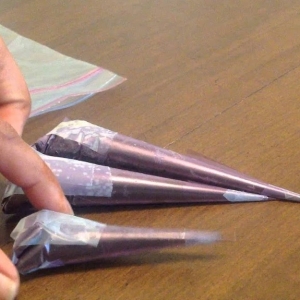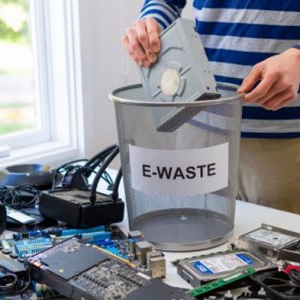In the high-stakes environment of a Biosafety Level (BSL) laboratory, containment is paramount. Researchers working with infectious agents—from Salmonella (BSL-2) to Ebola virus (BSL-4)—rely on a multi-layered defense system to protect themselves, the public, and the environment. While safety cabinets, negative pressure rooms, and personal protective equipment (PPE) are visible safeguards, one of the most crucial pieces of equipment operates often out of sight: the autoclave. And within this category, the vertical autoclave plays a uniquely vital role.

A vertical autoclave, characterized by its top-loading design where the chamber is accessible via a lid that opens vertically, is more than just a large pressure cooker. In the BSL lab, it is the final, non-negotiable barrier between hazardous waste and safe disposal, ensuring that every microorganism within a load is rendered inert.
Why Vertical Autoclaves are the Workhorses of BSL Labs
The design and operational principles of vertical autoclaves make them exceptionally well-suited for the specific needs of containment laboratories.
1. Superior Containment and Decontamination Workflow:
The primary advantage of a vertical autoclave in a BSL setting is its inherent design for safe waste handling. Waste generated within the lab—such as used pipette tips, petri dishes, culture vessels, and even liquid effluents—is often collected in dedicated bins.
The "Dirty Side" to "Clean Side" Principle: A vertical autoclave is frequently installed as a pass-through unit, with its door accessible from both the contaminated BSL lab side ("dirty side") and a clean corridor or disposal area ("clean side"). Lab personnel load the waste from the BSL side, run the sterilization cycle, and then authorized staff can safely unload the sterilized, inert waste from the clean side. This completely eliminates the need to transport unsterilized waste out of the lab, drastically reducing the risk of exposure and spillage.
2. Handling Liquids with Unmatched Safety:
BSL labs generate significant volumes of liquid waste—spent culture media, buffers, and other liquids that may contain high concentrations of pathogens. Vertical autoclaves excel at this task.
Deep Chamber Design: The vertical orientation provides a deep, cylindrical chamber that is ideal for containing large, tall containers of liquid without risk of tipping over.
Gradual Cooling and Pressure Release: Liquids require a specialized sterilization cycle. If pressure is released too quickly at the end of the cycle (as in a "gravity" cycle for dry goods), superheated liquids can boil over violently, potentially breaching their containers and contaminating the autoclave's interior. Vertical autoclaves designed for liquids offer "liquid" or "slow exhaust" cycles that gradually cool the chamber and release pressure, preventing boil-overs and ensuring complete decontamination safely.
3. Robust Construction and Reliability:
BSL labs, by nature, require equipment that is built to last and perform consistently. Vertical autoclaves are typically constructed from heavy-duty stainless steel (grades 316 or 304) that can withstand constant exposure to high pressure, temperature, steam, and often corrosive chemical vapors from decomposing waste. Their mechanical simplicity—often featuring a manual or automated locking mechanism—translates to fewer points of failure and easier maintenance.

Key Features for BSL Compliance
Not every vertical autoclave is fit for a containment lab. Those installed in BSL-3 and BSL-4 facilities, in particular, must include specialized features:
Double-Door, Interlocked Systems: In a pass-through configuration, the doors are mechanically or electronically interlocked. This ensures that only one door can be opened at a time, maintaining the integrity of the containment barrier. The door on the contaminated side cannot be opened once a cycle is complete until the cycle on the clean side is verified.
Validated Sterilization Cycles: It is not enough to assume waste is sterile. Vertical autoclaves in BSL labs must be validated to prove they achieve sterility. This involves:
Physical Monitors: Built-in sensors that record and print or export time, temperature, and pressure data for every cycle, providing a permanent quality assurance record.
Chemical Indicators: Strips or tape that change color when exposed to specific temperatures, providing a visual, in-chamber verification.
Biological Indicators (BIs): The gold standard. Spores of a highly heat-resistant bacterium (e.g., Geobacillus stearothermophilus) are placed within a challenge load. After the cycle, the spores are cultured. No growth confirms the autoclave successfully killed even the hardiest organisms, validating the entire process.
Cycle Integrity and Alarm Systems: Advanced autoclaves feature self-diagnostics and will abort a cycle and trigger an alarm if any parameter (temperature, pressure, time) deviates from the set protocol. This prevents the release of potentially unsterilized material.

Summary
The vertical autoclave is far from a mere utility appliance. In the ecosystem of a BSL lab, it is a critical engineering control and a cornerstone of the risk management strategy. Its robust, safe design for handling solid and liquid waste, combined with features that ensure validated sterility and maintain containment barriers, makes it an indispensable tool.
It embodies the core principle of biosafety: never allowing a hazardous agent to escape its designated confines. By ensuring that everything that leaves the lab is biologically inert, the vertical autoclave provides the ultimate peace of mind, allowing scientists to focus on their vital research with the confidence that they are protecting the world outside their doors.







